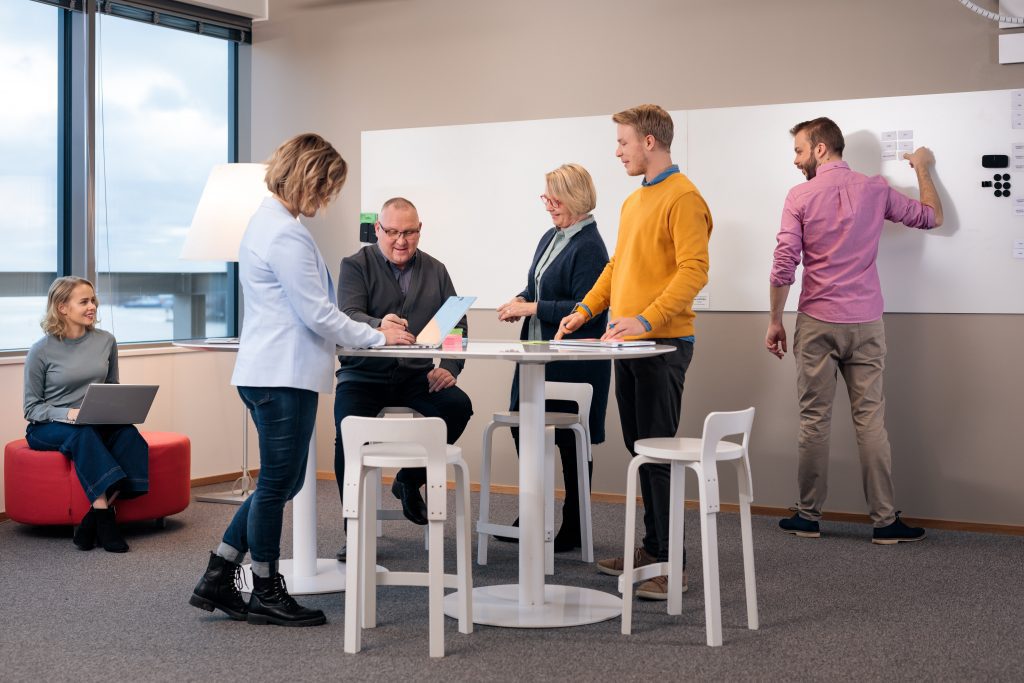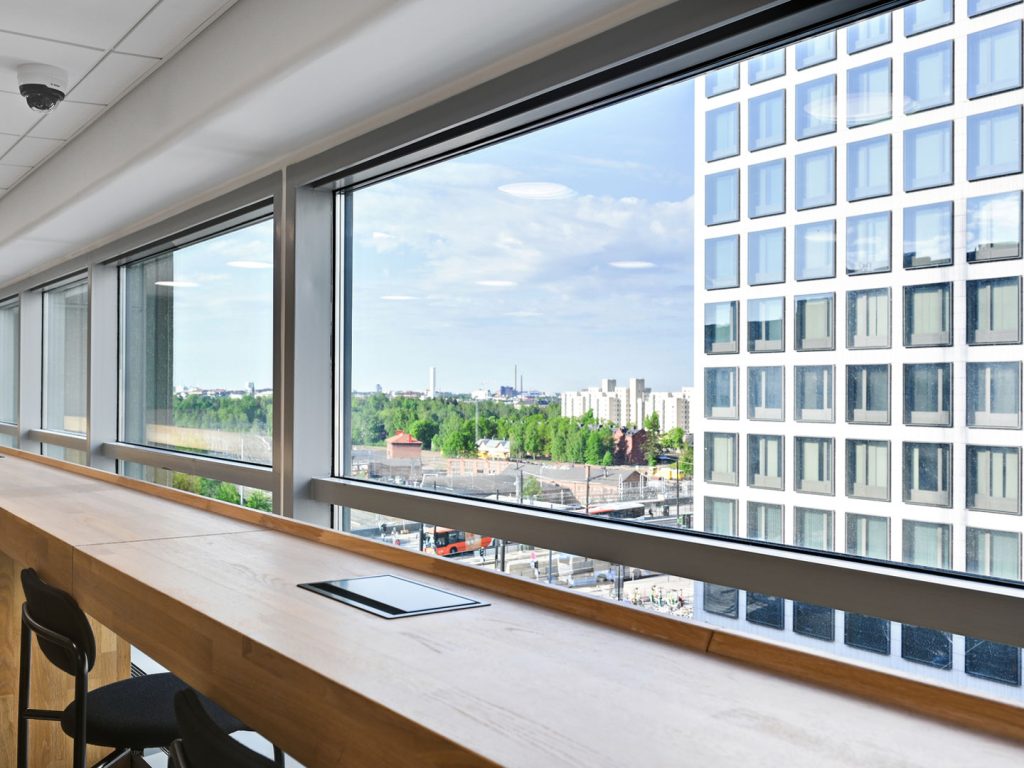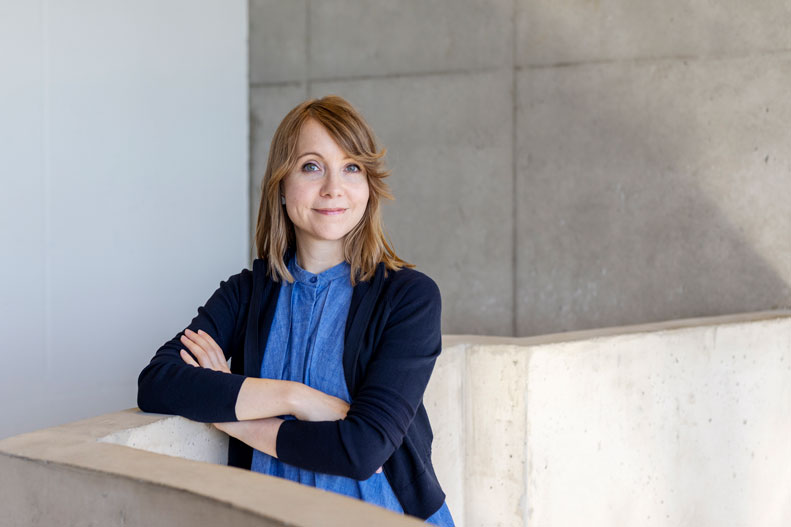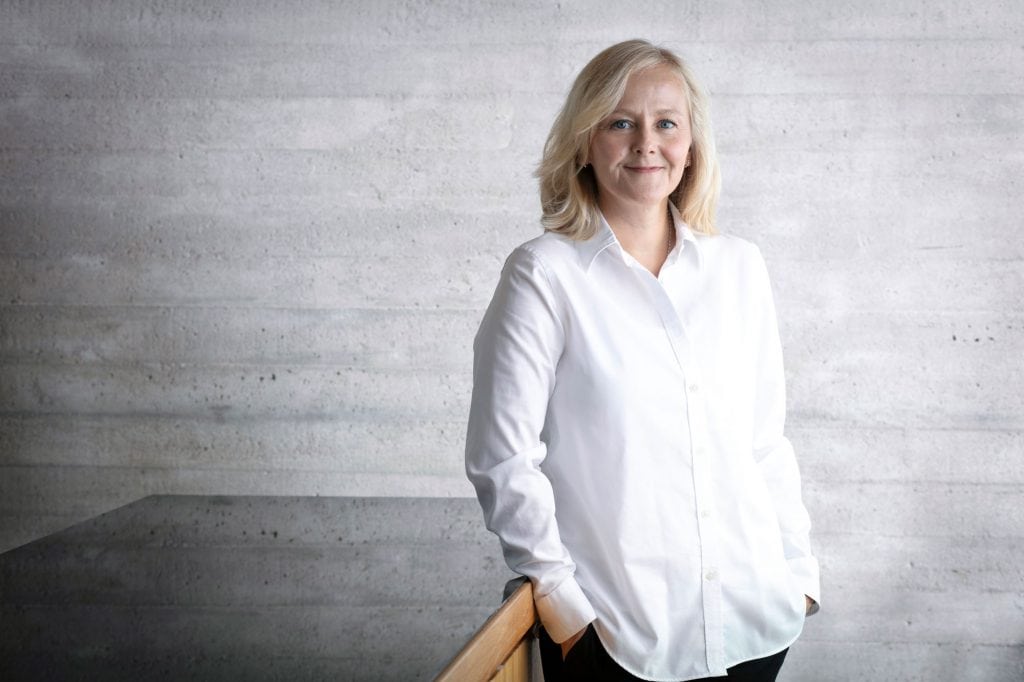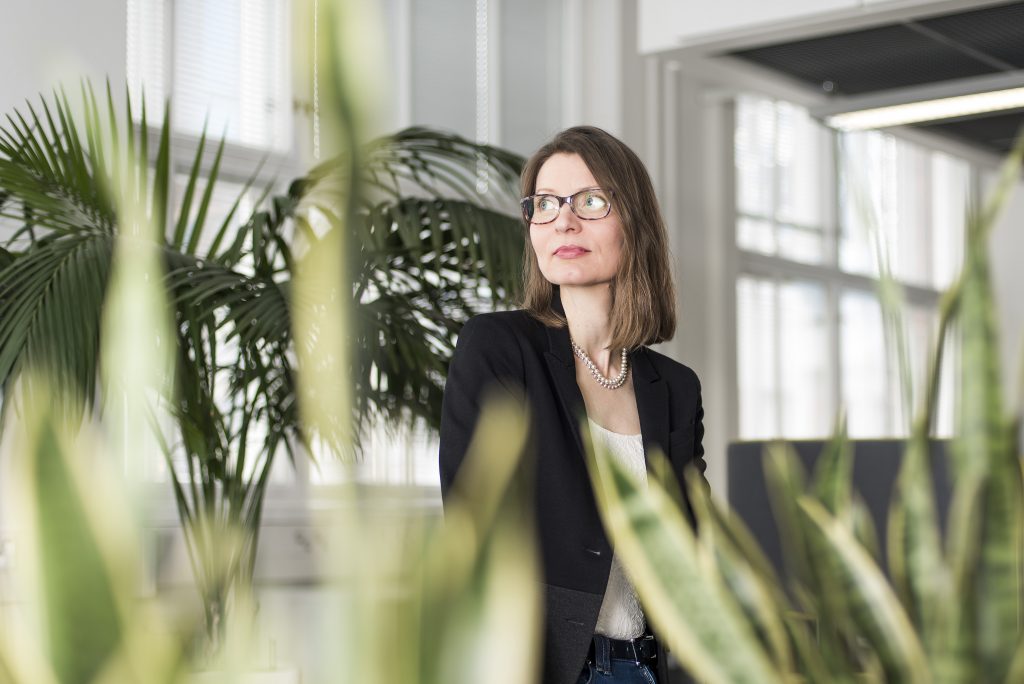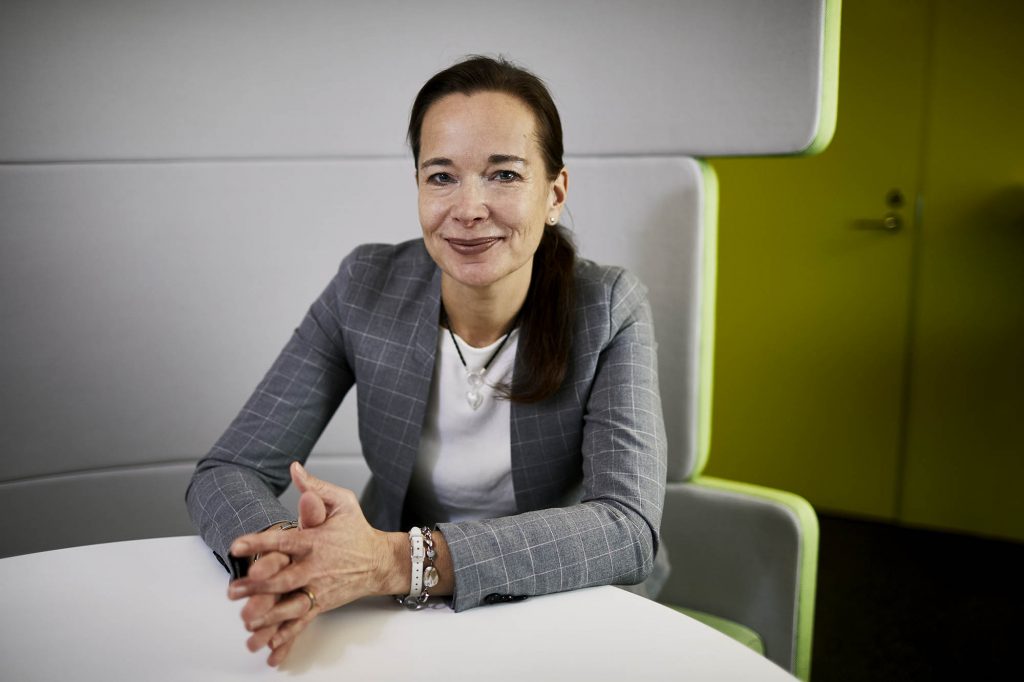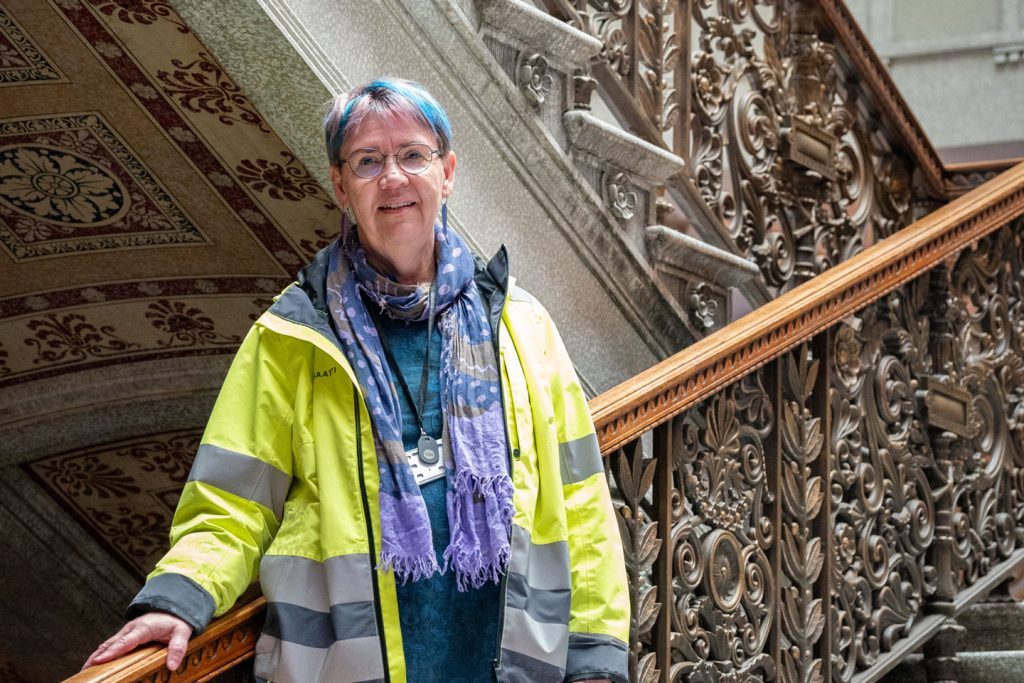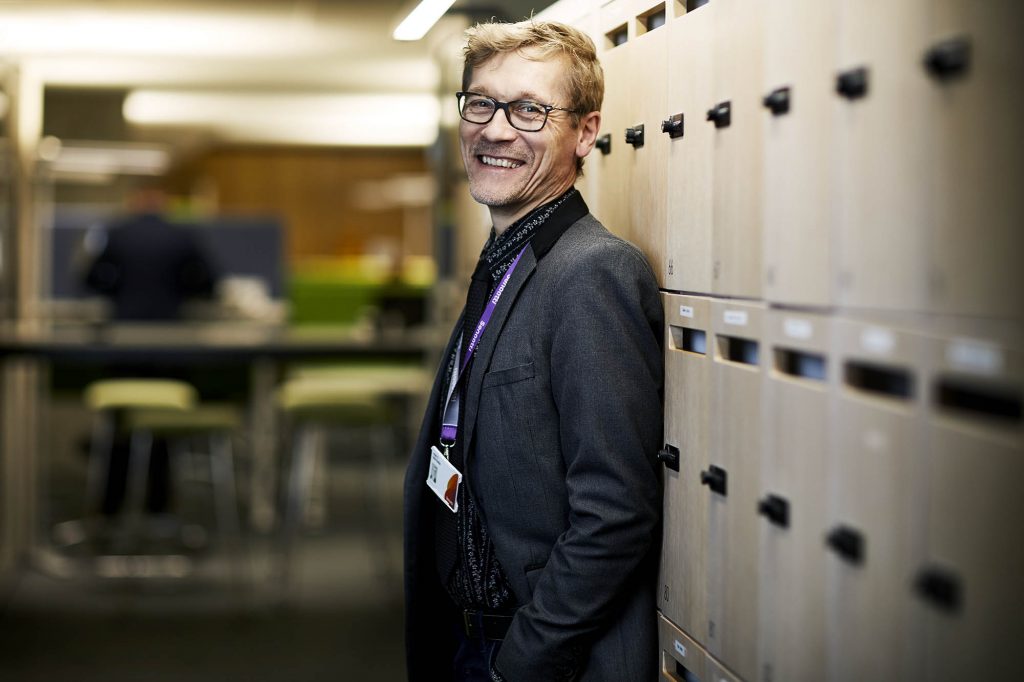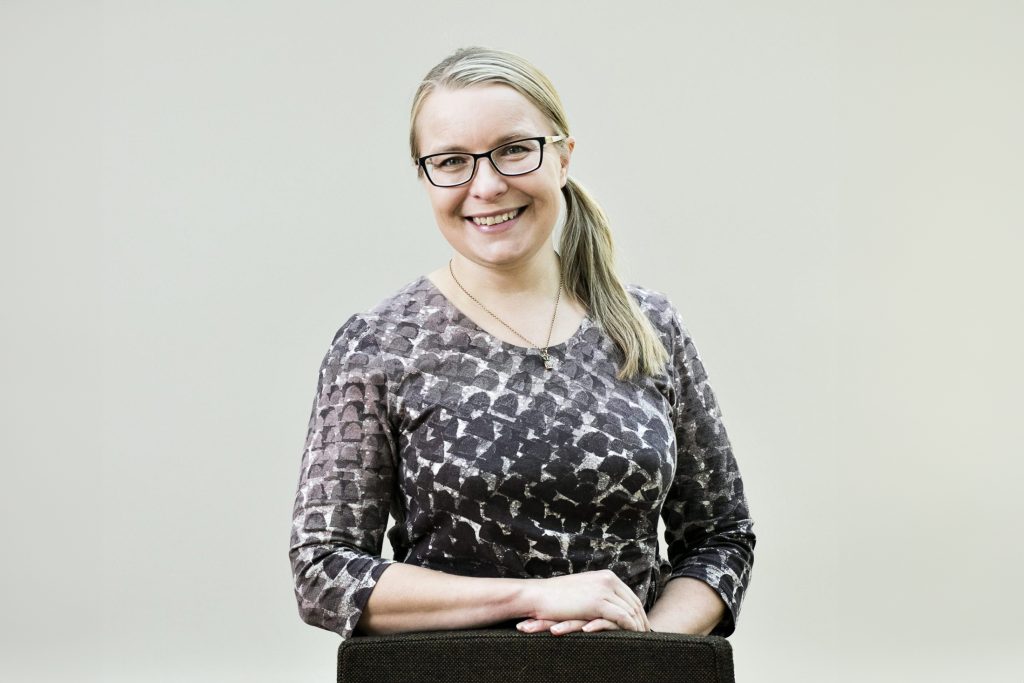A designer of sustainable workplace solutions
I’m inspired by envisioning future development trends and I want to promote the comprehensive inclusion of environmentally responsible solutions in work environment projects.
What does your job involve?
I work in the Work Environment Unit that provides expert services for our customers’ work environment change projects. My background in service design is strongly reflected in my job. I help our customers to highlight their specific needs so that we can create the most appropriate and flexible work environment for them. In practice, projects can study needs by, for example, observing activities, individual and group interviews, and various co-creation events.
Some of my working time is spent on sustainability development work. The focus of this work may be, for example, the sustainability activities of our customer projects or the development of our organisation’s operations on the environmental responsibility front.
What are the goals of your work?
The Work Environment Unit helps our customers moving to new premises, which in some cases is a process lasting several years. We are responsible for ensuring that the work environment itself and the operating models for its utilisation meet their needs in the best possible way. At the same time, we ensure that sustainability aspects are implemented as part of the change processes of work environments. Senate has pioneering goals, for example, related to low carbon and the circular economy, and turning these goals into practical action at the level of our projects requires an extensive overhaul.
What opportunities does the future offer your work?
A strong future-oriented approach is an integral part of my job, as work environment solutions must function for decades. In our projects, this can mean many things, such as scenario work, outlining the impact of change in the operating environment, and various solutions that focus on sustainability.
Central government is increasingly paying attention to the wise use of resources, and the co-use of facilities is increasing at the same time. This trend creates many inspiring opportunities. The real estate and construction sectors significantly affect Finland’s carbon footprint and in my own work I seek to find creative ways to minimise the adverse effects. Senate Properties has done great work in this respect, but I think we can make even more improvements.
Three principles that guide your work?
- Sustainability. Global trends set strict requirements for all industries, and we must respond to current challenges in a multidisciplinary and solution-focused way. Each project offers many opportunities to do things better and further reduce adverse climate effects.
- Looking to the future. Predicting the future makes it possible to promote the wise use of resources. We must minimise unused facilities, build only for genuine needs and aim to understand the different lifecycles of facility solutions from beginning to end.
- Service design. Service design helps us to develop increasingly user-friendlier work environments. It also offers a large number of tools to collect the necessary information to create smarter operating concepts and to support employee participation in change projects.
About me
I hold an MA in Creative Sustainability and am an interior architect. I’m currently completing a Master of Social Science in Futures Studies and have also studied on the Environmental Design programme at OCAD University in Toronto. I previously worked for Aalto University Properties Ltd and at Aalto University Department of Built Environment.
I have long been involved in the work of the nationwide services and premises network project, promoting the transition towards shared work environments and Suomi-piste service points. I am a member of Senate Properties’ corporate responsibility team and internal audit team. Over the years, I have been involved in many research and cooperation projects in the real estate and construction sector, emphasising various themes of sustainability, for example.
